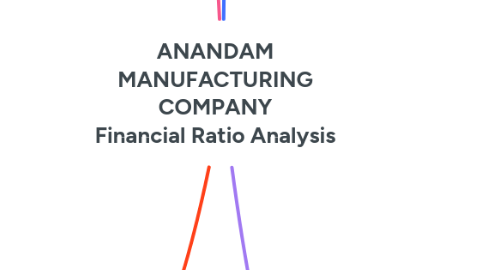
1. Profitability Ratio
1.1. Gross Profit Margin
1.1.1. Historical Trend Analysis:
1.1.1.1. 2012 - 2013 = 38%
1.1.1.2. 2013 - 2014 = 41%
1.1.1.3. 2014 - 2015 = 40%
1.1.2. Industry Average Comparison = 40%
1.1.3. Interpretation and Insights = It shows same with the current historical trend analysis means the stablity and consistency in how companies are managing their costs and generating profits relative to industry norms
1.2. Fixed Asset Turnover Ratio
1.2.1. Historical Trend Analysis
1.2.1.1. 2012 - 2013 = 1.05 times
1.2.1.2. 2013 - 2014 = 2.18 times
1.2.1.3. 2014 - 2015 = 2.22 times
1.2.2. Industry Average Comparison = 2 times
1.2.3. Interpretation and Insights = Historical trend analysis shows positive trends in company operational efficiency and asset utilization. But when to compare, industry average comparison is less than current trend it suggests a potential decline in efficiency in how companies are using their fixed assets to generate revenue.
2. Efficiency Ratio
2.1. Receivable Turnover
2.1.1. Historical Trend Analysis
2.1.1.1. 2012 -2013 = 6 times
2.1.1.2. 2013 - 2014 = 4.8 times
2.1.1.3. 2014 - 2015 = 4 times
2.1.2. Industry Average Comparison
2.1.2.1. Compared to the industry average of 7 times, indicates a worsening ability to collect receivables
2.1.3. Interpretation and Insights
2.1.3.1. The downward trend suggests that the company may be facing inefficiencies in its credit management practices. As a loan lender, this would raise concerns about the company's ability to maintain sufficient cash flow.
2.2. Working Capital Turnover
2.2.1. Historical Trend Analysis
2.2.1.1. 2012 -2013 = 5 times
2.2.1.2. 2013 - 2014 = 3.5 times
2.2.1.3. 2014 - 2015 = 4.77 times
2.2.2. Industry Average Comparison
2.2.2.1. 8 times
2.2.3. Interpretation and Insights
2.2.3.1. As a loan lender, the downward trend in the company's working capital turnover ratio, which remains below the industry average of 8 times , indicates inefficiencies in using working capital to generate sales. This inefficiency raises concerns about the company's operational effectiveness and financial stability, suggesting potential cash flow issues.
2.3. Inventory Turnover
2.3.1. Historical Trend Analysis
2.3.1.1. 2012 - 2013 = 3.88 times
2.3.1.2. 2013 - 2014 = 3.111 times
2.3.1.3. 2014 - 2015 = 2.56 times
2.3.2. Industry Average Comparison
2.3.2.1. 4.85 times
2.3.3. Interpretation and Insights
2.3.3.1. The downward trends indicate that the company is becoming increasingly inefficient in managing its inventory which may be low demand of its products, overstocking, decrease in sales etc. Given that the company never reaches the industry average inventory turnover ratio indicates that the company is below efficiency. Thus, the reduced inventory turnover can lead to cash flow problems, making it harder for the company to meet its short-term obligations, including loan repayments.
3. Liquidity Ratio
3.1. Current Ratio
3.1.1. Historical Trend Analysis:
3.1.1.1. 2012 - 2013 = 2.54
3.1.1.2. 2013 - 2014 = 1.79
3.1.1.3. 2014 - 2015 = 1.60
3.1.2. Industry Average Comparison
3.1.2.1. - Has lower ratio compared to the industry average at 2.30:1 - Indicates slower liquidity.
3.1.3. Interpretation and Insights
3.1.3.1. The current ratio over three years are decreasing. The figures are indicating the company can cover its short-term liabilities with its short term assets. However, the downward trend may raise concerns about the company's liquidity. Moreover, the industry average comparison is lower. Thus, loan officer may be inclined to approve the loan.
3.2. Quick Ratio
3.2.1. Historical Trend Analysis:
3.2.1.1. 2012 - 2013 = 1.31
3.2.1.2. 2013 - 2014 = 0.93
3.2.1.3. 2014 - 2015 = 0.79
3.2.2. Industry Average Comparison
3.2.2.1. The industry ratio is at 1.20:1, highlighting the consecutive year for the Company is relatively lower in comparison.
3.2.3. Interpretation and Insights
3.2.3.1. This decline suggests that the company’s liquidity is weakening, as it has less cash and cash equivalents relative to its current liabilities each year. The ratio suggested that the Company's financial stability might lead to a more cautious approach to lending. Thus, the loan officer may not be favourable to approve the loan
4. Leverage Ratio
4.1. Debt-to-Equity
4.1.1. Historical Trend Analysis:
4.1.1.1. 2012 - 2013 = 61%
4.1.1.2. 2013 - 2014 = 77%
4.1.1.3. 2014 - 2015 = 125%
4.1.2. Industry Average Comparison
4.1.2.1. 35 %
4.1.3. Interpretation and Insights
4.1.3.1. The company is using more debt relative to equity to finance its operations. This can amplify returns on equity but also increase financial risk, company must meet its debt obligations regardless of its financial performance.
4.2. Interest Coverage Ratio
4.2.1. Historical Trend Analysis:
4.2.1.1. 2012 - 2013 = 9.67
4.2.1.2. 2013 - 2014 = 7.08
4.2.1.3. 2014 - 2015 = 4.53
4.2.2. Industry Average Comparison
4.2.2.1. 10 TIMES
4.2.3. Interpretation and Insights
4.2.3.1. Lower Ability to Service Debt: A lower interest coverage ratio indicates company has less earnings available to cover its interest expenses.
4.2.3.2. Governance Issues: There could be underlying governance issues that result in inefficient operations or poor financial decisions impacting the company
